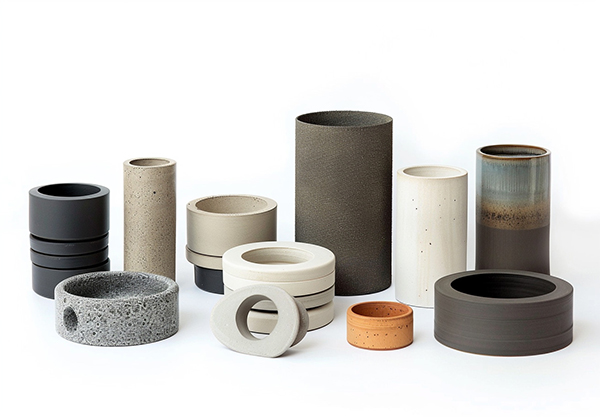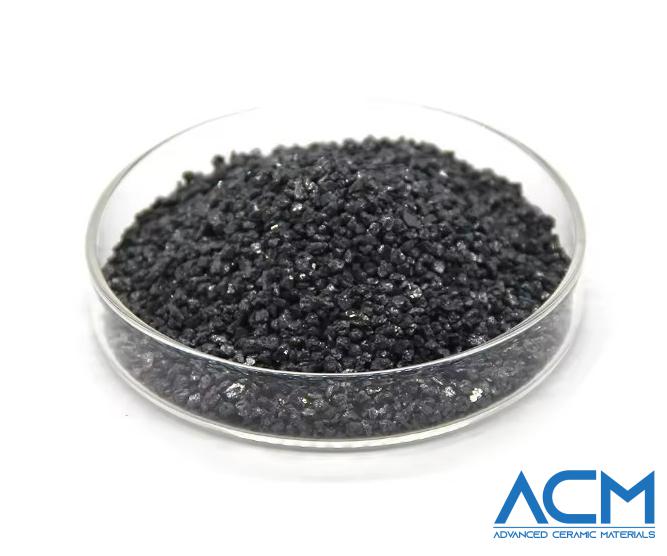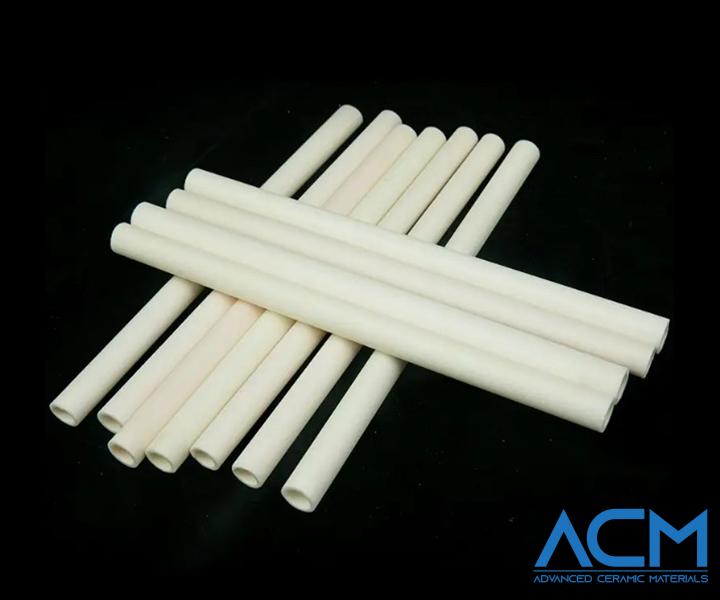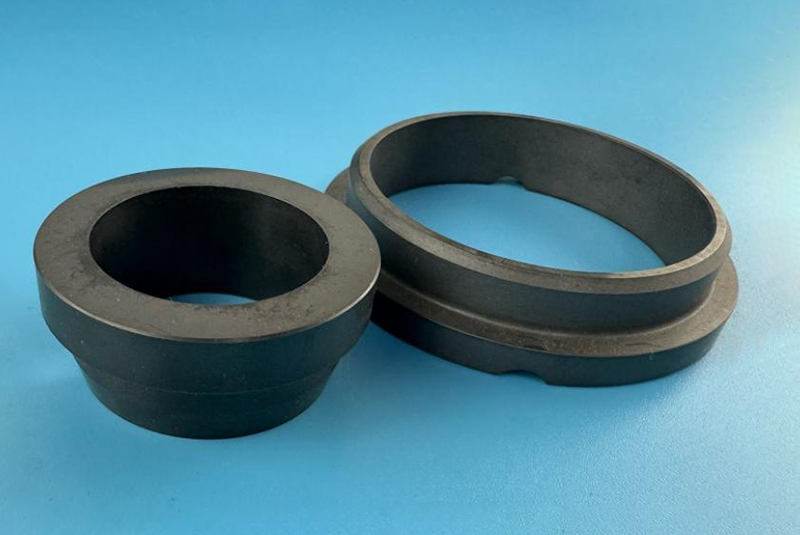Special Ceramics vs. Metal Alloys: A Detailed Comparison of Thermal Conductivity and Hardness
1. Introduction
Special ceramics and metal alloys play a key role in many industries. These materials are crucial in applications like electronics, aerospace, and medicine. Special ceramics, such as NbC and HfC, are known for their high-temperature resistance and hardness. Metal alloys like titanium and aluminum are valued for their strength, lightness, and ductility.
In this article, we will compare these materials' thermal conductivity and hardness. Both properties are essential when selecting materials for specific applications. Thermal conductivity affects heat management, while hardness determines how well a material can resist wear and pressure. We will see which is best suited for different uses by comparing these two material types.
2. Introduction to Special Ceramics
Special ceramics are materials made from non-metallic compounds. They are known for their strength, high temperature resistance, and durability. These materials are often used in demanding environments where other materials might fail.
Some common types of special ceramics include:
- Oxide Ceramics: These include materials like aluminum oxide (Al2O3) used in electronic components and medical devices.
- Silicon Carbide (SiC): Known for its hardness and thermal conductivity, SiC is used in the aerospace and automotive industries.
- Silicon Nitride (Si3N4): This material is highly resistant to wear and is used in mechanical parts like bearings and cutting tools.
- Niobium Carbide (NbC) and Hafnium Carbide (HfC): These are some of the hardest ceramics, known for their extreme temperature resistance. They are often used in aerospace applications.

Special ceramics are ideal for industries that need materials to withstand extreme temperatures, corrosion, and wear. They are often chosen for their ability to maintain their strength and integrity in harsh environments.
3. Introduction to Metal Alloys
Metal alloys are mixtures of two or more metals, or a metal and another element, to enhance certain properties. These materials are widely used due to their strength, flexibility, and ability to withstand wear and stress. Unlike pure metals, alloys can be tailored to meet the specific needs of various industries.
Some common types of metal alloys include:
- Titanium Alloys: Known for their lightness and strength, titanium alloys are often used in aerospace, medical implants, and marine applications.
- Aluminum Alloys: Lightweight and resistant to corrosion, aluminum alloys are used in automotive, aerospace, and construction industries.
- Stainless Steel: This alloy is known for its resistance to rust and corrosion. It is commonly used in kitchenware, medical tools, and structural components.
Metal alloys are chosen for their combination of strength, ductility, and thermal conductivity. They are particularly valuable in industries where strength and weight are critical, such as in transportation, construction, and electronics.
4. Thermal Conductivity Comparison
Thermal conductivity refers to a material's ability to transfer heat. This property is essential in many applications such as heat exchangers, electronics, and aerospace. Materials with high thermal conductivity are ideal for cooling applications, while those with low thermal conductivity are used for heat insulation.
Thermal Conductivity of Special Ceramics
Special ceramics generally have lower thermal conductivity than metals, making them excellent insulators. Here are the updated and more reliable thermal conductivity values:
-
Aluminum Oxide (Al2O3): ~30 W/m·K
This ceramic material has moderate thermal conductivity, making it useful in insulating applications where heat dissipation is needed but not excessive. -
Silicon Carbide (SiC): ~120-150 W/m·K
SiC has much higher thermal conductivity compared to many ceramics, making it suitable for high-performance applications in the automotive and aerospace industries. -
Silicon Nitride (Si3N4): ~30-40 W/m·K
Similar to aluminum oxide, silicon nitride is used in high-temperature applications where moderate thermal conductivity and good mechanical properties are required. -
Niobium Carbide (NbC): ~20 W/m·K
NbC has low thermal conductivity, which makes it ideal for use in extreme temperature environments, such as in aerospace and nuclear industries. -
Hafnium Carbide (HfC): ~13-20 W/m·K
HfC is one of the least thermally conductive ceramics, making it suitable for very high-temperature environments, such as rocket engines and re-entry vehicles.
Thermal Conductivity of Metal Alloys
Metal alloys generally have much higher thermal conductivity compared to ceramics. Here are the updated values:
-
Aluminum Alloys: ~160-220 W/m·K
Aluminum alloys, such as 6061 aluminum, are known for their excellent thermal conductivity. This makes them ideal for heat exchangers, electronics cooling, and automotive applications. -
Titanium Alloys: ~7-25 W/m·K
Titanium alloys have lower thermal conductivity than aluminum alloys, but are still higher than most ceramics. This property makes them useful in aerospace and medical applications where both heat resistance and strength are important. -
Stainless Steel: ~15-25 W/m·K
Stainless steel has lower thermal conductivity compared to aluminum alloys but higher than titanium alloys. It is used in applications requiring a balance between strength, heat resistance, and corrosion resistance, such as in kitchenware, medical instruments, and structural components.
Special Ceramics vs. Metal Alloys: Thermal Conductivity
-
Metals generally have much higher thermal conductivity than ceramics. For instance, aluminum alloys, with their range of 160-220 W/m·K, are much better at conducting heat than ceramics like HfC (13-20 W/m·K). This makes metals more suitable for applications requiring efficient heat dissipation, such as in heat exchangers and cooling systems.
-
Ceramics, on the other hand, are better suited for applications requiring insulation or resistance to high temperatures. Materials like HfC and NbC, with their low thermal conductivity, excel in environments where heat retention is more important than heat transfer, such as in aerospace applications.
| Type | Material | Thermal Conductivity (W/m·K) |
| Special Ceramic | Aluminum Oxide (Al2O3) | 30 |
| Silicon Carbide (SiC) | 120 | |
| Silicon Nitride (Si3N4) | 35 | |
| Niobium Carbide (NbC) | 20 | |
| Hafnium Carbide (HfC) | 16 | |
| Metal Alloy | Aluminum Alloys | 190 |
| Titanium Alloys | 16 | |
| Stainless Steel | 20 |
In summary, metals are better for applications needing efficient heat transfer, while ceramics are ideal for heat-resistant and insulating applications.
5. Hardness Comparison
Hardness refers to a material's resistance to indentation, scratching, or abrasion. It is an important property in applications where a material needs to withstand wear, pressure, or friction, such as in cutting tools, engine parts, and construction materials.
Hardness of Special Ceramics
Special ceramics are known for their high hardness, making them ideal for wear-resistant and high-stress applications. The hardness of ceramics is typically measured using methods like the Mohs hardness scale or the Vickers hardness test. Here are some key values for the hardness of different ceramics:
-
Aluminum Oxide (Al2O3): Mohs hardness ~9
Aluminum oxide is a very hard material, second only to diamond on the Mohs scale. It is widely used in abrasives and cutting tools. -
Silicon Carbide (SiC): Mohs hardness ~9.5
Silicon carbide is extremely hard, making it useful in applications such as abrasives, bulletproof armor, and industrial cutting tools. -
Silicon Nitride (Si3N4): Mohs hardness ~8.5
Silicon nitride is also very hard and is used in applications where high mechanical strength and wear resistance are required, such as in bearings and turbine blades. -
Niobium Carbide (NbC): Mohs hardness ~9
Niobium carbide is known for its high hardness, making it useful in applications that require resistance to wear and high-temperature performance. -
Hafnium Carbide (HfC): Mohs hardness ~9
Hafnium carbide is one of the hardest known ceramics, ideal for use in extreme conditions such as aerospace and military applications.
Hardness of Metal Alloys
Metal alloys generally have lower hardness than ceramics, but can still be very hard depending on their composition. The hardness of metals is typically measured using the Vickers hardness or Brinell hardness test. Here are the hardness values for common metal alloys:
-
Aluminum Alloys: Vickers hardness ~60-160 HV
Aluminum alloys are relatively soft compared to ceramics, though certain high-strength aluminum alloys (like 7075) can be quite hard and resistant to wear. -
Titanium Alloys: Vickers hardness ~250-400 HV
Titanium alloys are harder than aluminum alloys but not as hard as most ceramics. They offer a balance between hardness and toughness, making them ideal for aerospace, medical implants, and marine applications. -
Stainless Steel: Vickers hardness ~150-300 HV
Stainless steel is harder than aluminum alloys and is known for its excellent corrosion resistance. It is commonly used in construction, medical devices, and tools.
Special Ceramics vs. Metal Alloys: Hardness Comparison
In terms of hardness:
-
Ceramics are much harder than metal alloys. For example, Silicon carbide (SiC) and Hafnium carbide (HfC) are significantly harder than metals like aluminum alloys and titanium alloys. This makes ceramics ideal for applications requiring high resistance to wear, scratches, and abrasion.
-
Metals, on the other hand, can be harder than ceramics in some cases but are generally more susceptible to wear and deformation under high-stress conditions. However, metals like titanium alloys and stainless steel offer better toughness, which makes them more suitable for structural applications where both strength and ductility are needed.
| Type | Material | Hardness (Mohs or Vickers) |
| Special Ceramic | Aluminum Oxide (Al2O3) | 9 (Mohs) |
| Silicon Carbide (SiC) | 9.5 (Mohs) | |
| Silicon Nitride (Si3N4) | 8.5 (Mohs) | |
| Niobium Carbide (NbC) | 9 (Mohs) | |
| Hafnium Carbide (HfC) | 9 (Mohs) | |
| Metal Alloy | Aluminum Alloys | 60-160 HV |
| Titanium Alloys | 250-400 HV | |
| Stainless Steel | 150-300 HV |
In summary, ceramics have a clear advantage in terms of hardness, making them the material of choice for high-wear environments. Metals offer a balance of hardness and toughness, which is essential for many industrial and engineering applications.
6. Factors to Consider in Material Selection
When choosing between special ceramics and metal alloys for a specific application, several factors need to be considered. These factors often depend on the requirements of the application, including temperature resistance, corrosion resistance, mechanical properties, and cost. Below are some key factors to consider:
1. High-Temperature Resistance
-
Special Ceramics: Many special ceramics, such as Hafnium Carbide (HfC) and Niobium Carbide (NbC), are ideal for extremely high-temperature environments. They can withstand temperatures far above the melting point of most metals, making them the preferred choice for aerospace and high-temperature furnace applications.
-
Metal Alloys: While some metal alloys, like Titanium Alloys, have good high-temperature properties, they typically cannot withstand the extreme temperatures that ceramics can. Metals like Titanium are better suited for moderately high temperatures, typically up to 600°C (1,100°F). Ceramics, on the other hand, can endure temperatures above 3,000°C (5,400°F) in some cases.
2. Corrosion Resistance
-
Special Ceramics: Ceramics are typically more resistant to corrosion and chemical attacks than metals. Silicon Carbide (SiC) and Silicon Nitride (Si3N4), for example, are highly resistant to acidic or basic environments and can perform well in chemical processing applications.
-
Metal Alloys: Stainless steel and Titanium alloys are known for their corrosion resistance, particularly in acidic environments. Titanium, in particular, forms a stable oxide layer that prevents further corrosion. However, ceramics still generally have a higher overall resistance to chemical degradation.
3. Weight
-
Metal Alloys: Metals like Aluminum Alloys and Titanium Alloys are much lighter than ceramics. Titanium offers a great strength-to-weight ratio, which is why it is commonly used in aerospace and automotive industries. Aluminum is used in a variety of lightweight applications, including aircraft bodies, automotive frames, and packaging.
-
Special Ceramics: Ceramics tend to be much heavier than metals due to their higher density. While this can be an advantage in certain applications (such as ballast weights or shielding), it is generally a disadvantage when weight reduction is critical.
4. Mechanical Strength and Toughness
-
Metal Alloys: Titanium alloys and Stainless Steel offer higher toughness than ceramics. They can absorb more energy before breaking, making them better suited for applications requiring high impact resistance and ductility, such as in structural parts, tools, and equipment.
-
Special Ceramics: While ceramics like Silicon Carbide (SiC) and Aluminum Oxide (Al2O3) are extremely hard and wear-resistant, they are typically more brittle than metals. This means they may fail under high-impact stress or shock loading. Ceramics are better for applications where wear resistance is more critical than impact resistance.
5. Processing and Cost
-
Metal Alloys: Metals are generally easier to process and shape into complex forms using established techniques like casting, forging, and welding. They also tend to be less expensive than ceramics, especially for large-volume applications. Aluminum and Stainless Steel are both relatively inexpensive compared to specialty ceramics.
-
Special Ceramics: Ceramics are more difficult to process due to their brittleness and the high temperatures required for manufacturing. They often require more specialized equipment and procedures for shaping, such as pressing, sintering, or machining with diamond tools. Additionally, ceramics can be more expensive, particularly when high-performance materials like Silicon Carbide (SiC) or Hafnium Carbide (HfC) are used.
6. Application-Specific Recommendations
-
High-Temperature and Wear-Resistant Applications: If the application involves high temperatures and requires materials that can withstand significant wear, special ceramics such as Silicon Carbide (SiC) or Niobium Carbide (NbC) may be the best option.
-
Structural and Lightweight Applications: For applications requiring strength, toughness, and lightweight properties (e.g., aerospace and automotive), metal alloys like Titanium and Aluminum are better choices.
-
Corrosion-Resistant Applications: For highly corrosive applications, such as in chemical processing or marine environments, Titanium Alloys or Stainless Steel may be the best option. However, ceramics like Silicon Nitride (Si3N4) can also be an excellent choice in corrosive environments with high thermal and mechanical demands.
7. Conclusion
In comparing special ceramics and metal alloys, each material excels in different areas. Ceramics are superior in hardness and wear resistance, making them ideal for applications requiring abrasion resistance and high-temperature stability. On the other hand, metal alloys provide better toughness and thermal conductivity, making them more suitable for applications that require impact resistance, heat transfer, and easier processing.
Ultimately, the choice between the two depends on specific requirements such as temperature, strength, weight, and cost-efficiency. Both materials offer unique advantages for different industrial applications.
If you are looking to purchase special ceramic materials, please contact Advanced Ceramic Materials (ACM).
{{item.content}}
LEVE A REPLY
{{item.children[0].content}}
{{item.content}}
LEAVE A REPLY
SUBSCRIBE OUR NEWSLETTER
- Boron Nitride in Cosmetics: Enhancing Performance and Sensory Appeal
- Maximize MOCVD Yield and Purity with Hexagonal Boron Nitride Setters
- What Are the Advantages and Uses of Boron Nitride Ceramic Sheet?
- The Compression Annealing Advantage for Pyrolytic Boron Nitride
- Beyond Insulation: The Surprising Spectrum of Ceramic Thermal Conductivity











